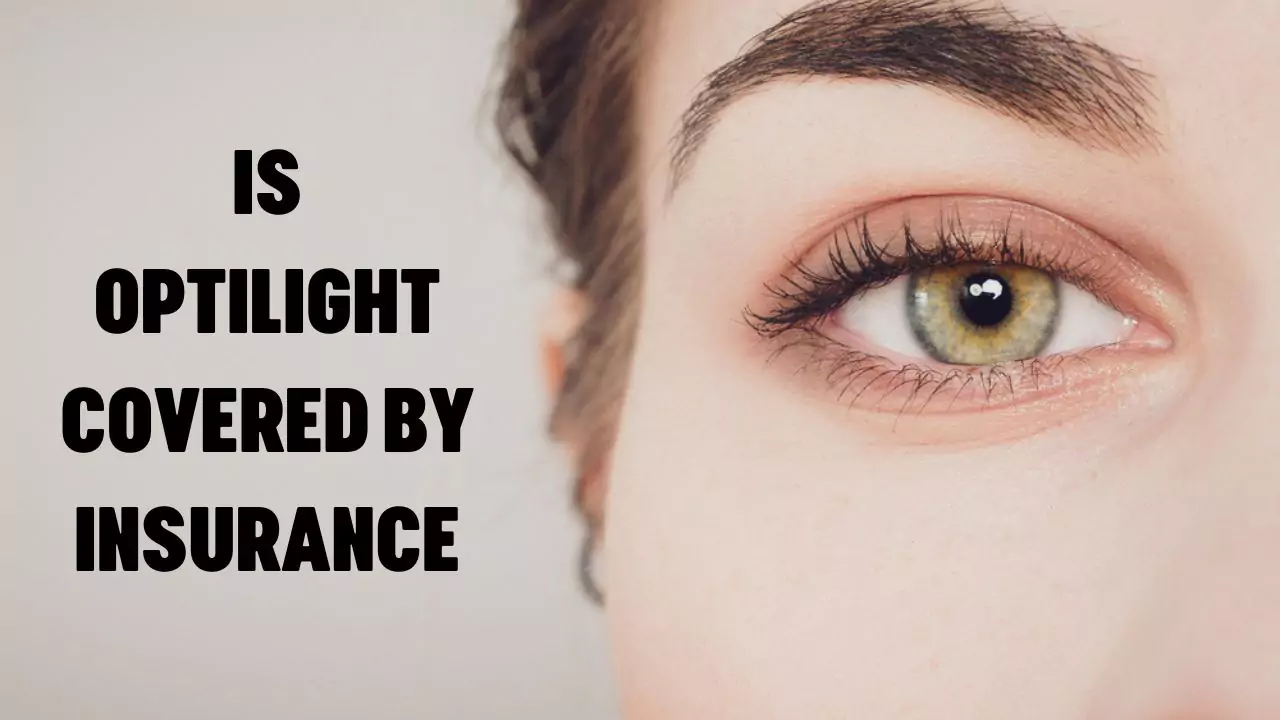Vision and medical insurance may cover Optilight. It may depend on your insurance provider, your specific policy, and whether Optilight is considered medically necessary for you.
Some insurance plans may cover Optilight if you have a referral from an eye practitioner, while others may not.
You should always verify with your insurance company before undergoing any treatment.
In this article, we will explain what Optilight is, what are its benefits, how to reduce its cost, what are its side effects, and how it compares to other treatments for dry eye disease.
What is Optilight?
Optilight is a device that uses intense pulsed light (IPL) to treat dry eyes due to MGD. MGD occurs when the meibomian glands, which are tiny glands in the eyelids that produce oil for the tear film, become blocked or dysfunctional. This leads to inflammation, abnormal blood vessels, and reduced tear quality and quantity.
Optilight works by applying pulses of light to the skin around the eyes, which reduces inflammation, destroys abnormal blood vessels, improves meibomian gland function, and decreases demodex mites that can cause infection. When it comes to treating dry eyes, Optilight is the only IPL device that has received FDA approval.
What are the principal advantages of Optilight?
Optilight has several advantages over other treatments for dry eye disease, such as:
- It treats the underlying cause of dry eye disease, not just the symptoms.
- It is painless, quick, and comfortable. Each session takes about 15 minutes and involves four easy steps.
- It has proven efficacy and safety. Clinical studies have shown that Optilight can significantly improve tear breakup time, reduce inflammatory markers, and enhance meibomian gland morphology and functionality.
- It has long-lasting results. Most patients experience relief after four sessions, spaced 3-4 weeks apart. The effects can last for 6-12 months or longer.
- It can be combined with other treatments, such as low-level light therapy (LLLT), which uses invisible light to stimulate cellular regeneration and healing.
5 Tips to Lower Optilight Cost
Optilight is not usually covered by health insurance, as it is considered an elective procedure. The cost of Optilight may vary depending on the provider, location, and number of sessions required. However, some tips to lower Optilight cost are:
- Ask your provider about discounts or packages for multiple sessions or referrals.
- Use your FSA or HSA to pay for Optilight. These are tax-advantaged accounts that allow you to use pre-tax dollars for eligible medical expenses.
- Check if your provider offers financing options or payment plans that suit your budget.
- Compare prices from different providers in your area and look for online reviews or testimonials.
- Consult with your provider about the expected outcomes and benefits of Optilight for your specific case.
Major Side Effects Of Optilight Treatment For Dry Eyes
Optilight is a safe and well-tolerated treatment for dry eyes. However, some possible side effects may include:
- Mild redness, swelling, or bruising of the treated area, which usually resolves within a few hours or days.
- Temporary dryness or irritation of the eyes, which can be relieved with artificial tears or lubricants.
- Sensitivity to light or sun exposure, which can be prevented by wearing sunglasses or sunscreen.
- Rarely, blistering, scarring, infection, or changes in skin pigmentation may occur.
These side effects are usually mild and transient and do not affect the quality of life or vision of the patients. If you experience any severe or persistent side effects, contact your provider immediately.
How long does Optilight treatment last for dry eyes?
The duration of Optilight treatment depends on the severity and cause of dry eye disease. Most patients require four sessions, spaced 3-4 weeks apart, to achieve optimal results. The effects of Optilight can last for 6-12 months or longer. Some patients may need maintenance sessions every 6-12 months to prolong the benefits of Optilight.
OptiLight vs. LipiFlow, which is best for treating dry eye?
LipiFlow is another device that treats dry eyes due to MGD. LipiFlow works by applying heat and pressure to the eyelids, which melts and expels the blocked oil from the meibomian glands. LipiFlow is also FDA-approved for dry eye management and has been shown to improve tear quality and quantity, reduce symptoms, and enhance meibomian gland function.
Both Optilight and LipiFlow are effective and safe treatments for dry eye disease caused by MGD. However, they have some differences, such as:
- Optilight uses light, while LipiFlow uses heat and pressure.
- Optilight treats the skin around the eyes, while LipiFlow treats the eyelids directly.
- Optilight addresses multiple factors of dry eye disease, such as inflammation, abnormal blood vessels, and Demodex mites, while LipiFlow mainly focuses on meibomian gland obstruction.
- Optilight is painless and comfortable, while LipiFlow may cause some discomfort or pain during or after the procedure.
- Optilight requires four sessions, while LipiFlow requires one session.
- Optilight has longer-lasting results, while LipiFlow may need more frequent sessions.
The choice between Optilight and LipiFlow depends on the individual preference, condition, and budget of the patient. Some patients may benefit from combining both treatments for optimal results. Consult with your provider to determine which treatment is best for you.





